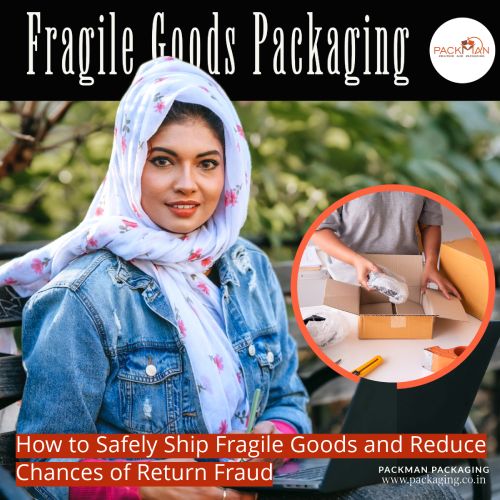Shares Packman Packaging India’s Top Corrugated Box Manufacturer
The product return policy offered by e-commerce platforms is perhaps one of the most important factors that attract online shoppers and influence their purchasing decisions. A clear and customer-friendly return policy can contribute to a more positive shopping experience and increase consumer confidence when shopping online. However, with the rise of online shopping, return frauds have also become a concern for e-commerce platforms.
Return fraud refers to a deceptive practice where individuals exploit a store’s return policy for personal gain, often by returning used, stolen, or counterfeit items. Online scammers manipulate e-commerce sites, breaching accounts to request refunds and siphon money. This harms retailers through financial losses, higher prices, and operational problems. It damages trust, strains customer ties, and diverts resources from legitimate sales, impacting the retail system.
Thus, implementing strong strategies for secure shipping of goods, particularly fragile items, is vital. Fragile items are prone to transit damage, causing returns and refunds due to poor packaging or mishandling.
Fragile items are delicate objects prone to breaking or damage from slight force. Glassware, porcelain figurines, electronics, musical instruments, and artworks that require careful handling and protective packaging are fragile items. Packman Packaging shares a few ways by which fragile items can be packed to ensure they reach the customers in pristine condition.
How to safely ship fragile goods?
Mr. Gaurav Jalan, Founder, and Director of Packman Packaging says, by following the given points below you will be able to ship your fragile goods safely and reduce chances for return fraud.
The Right Fit
Use a sturdy, corrugated cardboard box that is appropriate for the size and weight of the item. Avoid using boxes that are too big, as this can lead to shifting during transit. Invest in good quality packaging materials designed to protect fragile items during transit. This might include bubble wrap, foam inserts, cushioning materials, and sturdy boxes. The packaging should be able to absorb shocks and vibrations to prevent breakage. Don’t worry about the cost as the long-term protection it offers outweighs any initial expenses.
Supporting Material
Fragile items need adequate cushioning to prevent damage during shipping. Wrap the fragile item with several layers of bubble wrap or use packing peanuts to create a cushioning layer inside the box. Make sure to wrap each item individually. This will absorb shocks and vibrations, ensuring safe transportation. It helps maintain the integrity of the items and reduces the risk of breakage or harm. But, don’t overdo it making unboxing difficult for the customer.
Proper Handling Instructions
Label them with a ‘fragile’ sticker to alert the shipping carrier that the contents of the package are delicate and require careful handling. Include clear instructions on how to handle and unpack the fragile item. This can be especially helpful for delicate electronics or intricate artwork.
Secure Sealing
Ensure that packages are securely sealed and taped to prevent accidental opening or damage during transit.
Double-Boxing
For extremely fragile items, consider double-boxing. Place the cushioned item in a smaller box, and then pack that box within a larger box with additional padding in between.
Impact Sensors
Attach a sensitive tilt or impact sensor to safeguard delicate shipments. This device promptly alerts handlers to any rough handling or tilting during transit, preventing damage to fragile contents by ensuring careful and safe package management.
Insurance
Consider purchasing shipping insurance to provide coverage in case of damage during transit. This provides an added layer of protection against damage or loss and reassures customers that their purchases are covered.
We must remember that the ultimate goal is to ensure flawless product delivery. By prioritizing safe shipping practices for fragile items, retailers can not only reduce the risk of returns due to damage but also enhance the overall customer experience.





